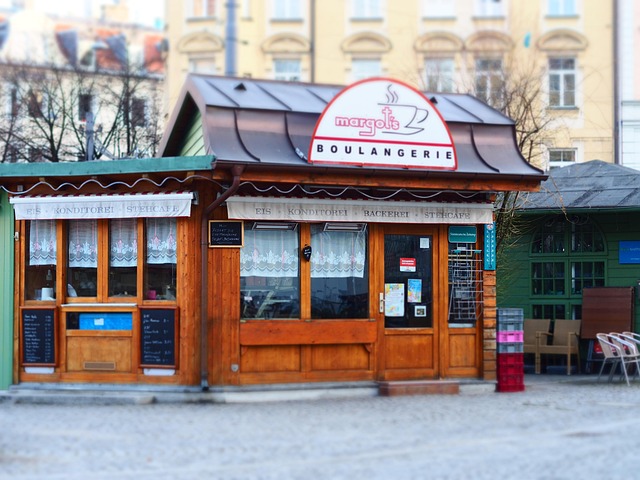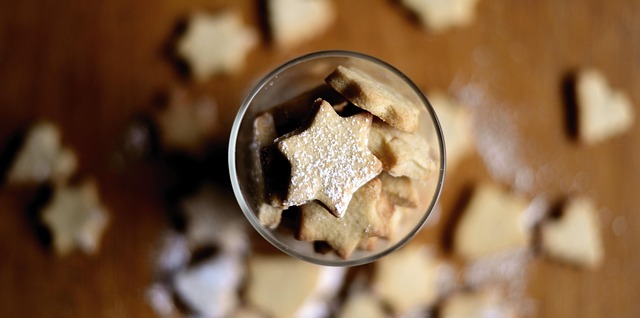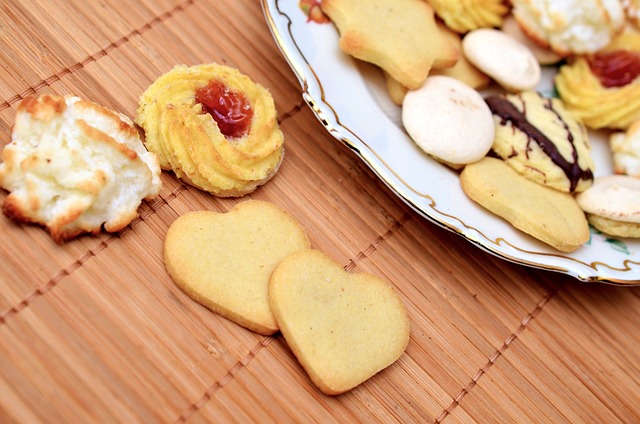Shipping custom cookies requires meticulous care due to their delicate nature. Use specialized packaging like insulated boxes with padding and tissue paper wrapping to prevent breakage. Choose temperature-controlled carriers for consistent temperature management, vital for cookie quality. Proper labeling, handling, and prompt shipping minimize damage risk. Implementing best practices ensures customer satisfaction and delicious cookie arrival.
Shipping custom cookies, delicate creations that demand special care. This comprehensive guide explores the intricacies of transporting fragile baked goods, from understanding their sensitive nature to implementing best practices. Learn about crucial packaging techniques, ideal shipping methods, temperature control measures, and meticulous handling for maximum protection. Discover common pitfalls to avoid and ensure customer satisfaction with every bite.
- Understanding the Delicate Nature of Custom Cookies
- Packaging for Safe Transport: Essential Considerations
- Choosing the Right Shipping Method for Fragile Goods
- Temperature Control: Maintaining Consistency During Delivery
- Handling and Labeling for Optimal Care
- Common Pitfalls to Avoid When Shipping Custom Cookies
- Best Practices for Ensuring Customer Satisfaction
Understanding the Delicate Nature of Custom Cookies

Custom cookies, with their intricate designs and unique flavors, are a delicate creation meant to be cherished. When it comes to shipping these fragile baked goods, it’s essential to understand their special requirements. Each cookie is a work of art, requiring meticulous care during transit to ensure they arrive in the same state as they left. The delicate nature of custom cookies means they can easily be damaged by rough handling, extreme temperatures, or even small bumps during transportation.
To preserve these treats, specialized packaging and handling techniques are crucial. Bakers should opt for insulated boxes or containers that protect against temperature fluctuations, ensuring the cookies remain fresh and intact. Additionally, padding the package with protective materials like paper or bubble wrap can absorb shock and prevent breakage. Understanding the fragility of custom cookies is the first step in guaranteeing customer satisfaction and the integrity of these delectable creations.
Packaging for Safe Transport: Essential Considerations
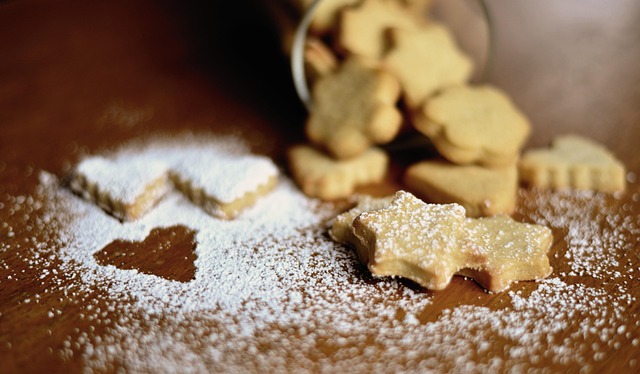
When shipping fragile baked goods, such as custom cookies, proper packaging is paramount to ensure their safe arrival at their destination. The primary goal is to protect the items from breaking or crushing during transit. Start by choosing a suitable container—a sturdy cardboard box with cushioning material like bubble wrap or foam is ideal. Ensure all gaps are filled to minimize movement inside the box.
Consider additional protective measures, such as wrapping each cookie individually in tissue paper or acid-free paper before placing them in the box. This extra layer of protection can absorb shocks and prevent cookies from getting crushed or contaminated. For especially delicate items, a layer of polystyrene or custom foam inserts can provide an extra cushion against impacts.
Choosing the Right Shipping Method for Fragile Goods

When shipping fragile baked goods, like custom cookies, it’s crucial to select a shipping method that prioritizes their safety during transit. Traditional ground shipping can be too risky due to potential delays and rough handling. Opting for faster, specialized carriers who offer temperature-controlled services is a wise decision to ensure your delicate treats arrive intact. These carriers often have specific packaging requirements designed to safeguard fragile items, reducing the chances of damage during transportation.
Additionally, choosing a shipping service that provides real-time tracking allows you to monitor the progress of your order. This transparency gives you peace of mind and enables quick action if any unexpected issues arise. By carefully considering these factors, you can ensure that your custom cookies reach their destination in prime condition, satisfying both the sender and the recipient.
Temperature Control: Maintaining Consistency During Delivery
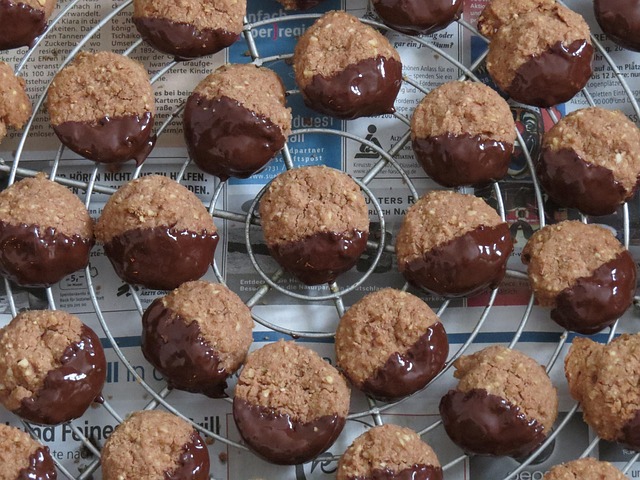
Maintaining consistent temperature control is paramount when shipping fragile baked goods, especially custom cookies that demand precision to retain their quality. Fluctuations in temperature can significantly impact the texture and taste of these delicate treats. During transit, extreme heat or cold may cause melting, crispiness, or even spoilage, compromising the customer’s experience. Thus, reliable insulation and cold chain management are essential to protect against such issues.
Packaging plays a crucial role here; insulated boxes with cooling packs can help regulate temperature throughout the delivery process. This ensures that custom cookies arrive in the same state they left the bakery, providing customers with a satisfying unboxing experience.
Handling and Labeling for Optimal Care
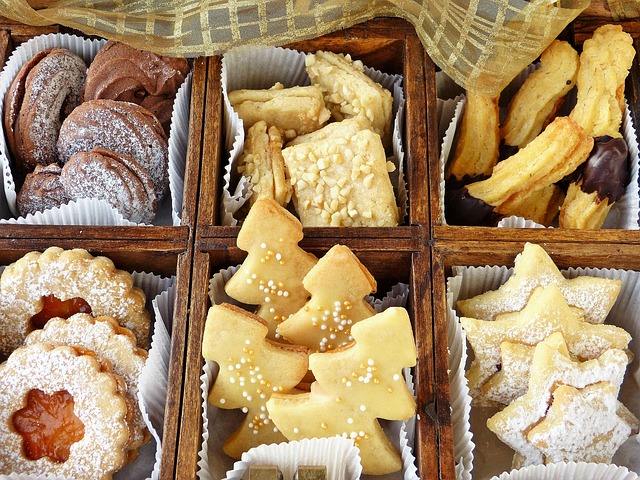
When shipping fragile baked goods, proper handling and labeling are paramount to ensuring their delicate nature is respected throughout transit. Custom Cookies, due to their soft texture and often intricate design, require special care. Packaging plays a significant role in safeguarding these treats; use shock-absorbing materials like bubble wrap or specialized foam inserts to cushion the cookies during movement.
Labeling is another critical aspect. Clearly mark the packages with “Fragile” and “Handle with Care” stickers. Additionally, specify the contents and include instructions for proper storage upon delivery. This ensures that recipients understand the special handling required to preserve the quality of your Custom Cookies, minimizing the risk of damage during transportation.
Common Pitfalls to Avoid When Shipping Custom Cookies
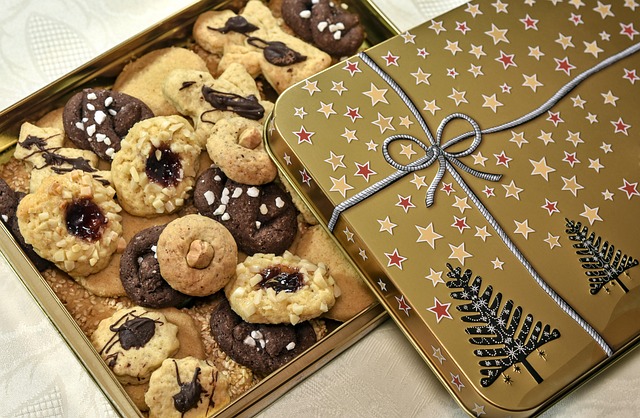
When shipping custom cookies, there are several common pitfalls that bakers and businesses should be aware of to ensure their delicate creations arrive safely at their destination. One of the primary issues is temperature control. These treats often require refrigeration or a chilled environment to maintain their texture and freshness. During transit, sudden temperature fluctuations can cause melting or spoilage, leading to disappointed customers. Thus, using insulated packaging and choosing reliable shipping carriers with cold chain logistics are essential steps.
Another trap to avoid is improper packaging. Custom cookies should be handled with care and packaged securely to prevent breaking or crushing. This means using sturdy boxes, filling voids with protective materials like tissue paper or bubble wrap, and ensuring the package isn’t overly heavy or bulky. Additionally, it’s crucial to consider shipping time frames. Delayed deliveries can cause cookie damage, so choosing faster shipping options and providing accurate delivery dates will help maintain quality.
Best Practices for Ensuring Customer Satisfaction

When shipping fragile baked goods, like custom cookies, customer satisfaction should be the top priority. To ensure a positive experience, implement best practices that prioritize care and protection during transit. This includes using specialized packaging designed to safeguard delicate items, such as rigid boxes with padding or foam inserts. Additionally, fill any empty spaces in the box with crinkle wrap or packing paper to prevent shifting and potential damage.
Furthermore, consider the temperature control aspect, especially for perishable items. Insulate the package with cooling packs or gel packets to maintain the desired temperature throughout the shipping process. Promptly address any issues that arise, like delays or damaged products, by offering replacements or refunds promptly. Effective communication is key; keep customers informed about their order status and potential delivery challenges to manage expectations and build trust.
